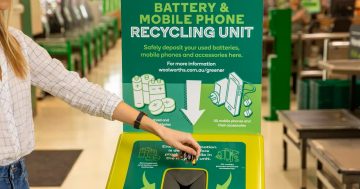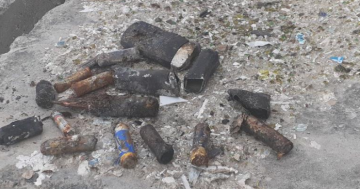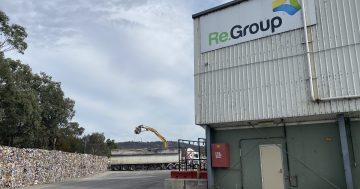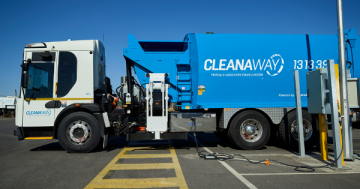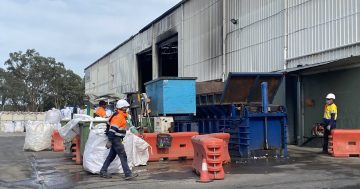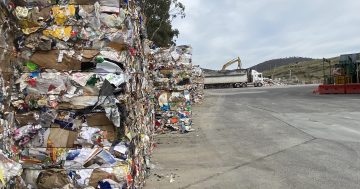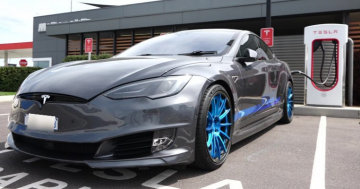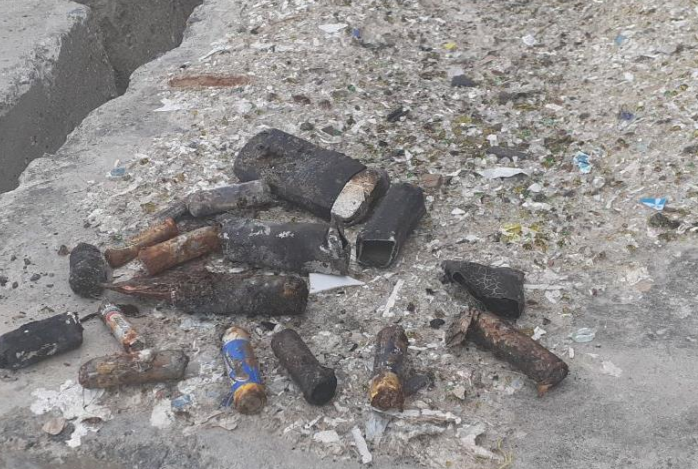
Burnt batteries were found by investigators in the Hume recycling facility’s waste compactor and chute. Photo: ACTFR report.
Evidence suggests the blaze that destroyed Canberra’s recycling plant on Boxing Day last year was the result of the humble battery.
An ACT Fire and Rescue investigation has concluded the presence of multiple types of batteries in the Hume facility’s waste compactor area led to the fire.
“This investigation concludes that this [fire] is considered accidental and that fire was caused by a thermal runaway situation of one or more Li [lithium-ion] batteries which were damaged in the waste compactor during normal operations,” the report stated.
Acting Chief Officer Greg Mason explained lithium-ion batteries are ‘energy dense’ and highly flammable, and when they fail they can undergo a process called ‘thermal runaway’.
“Thermal runaway is the breakdown of the construction of the battery and it can be caused by a number of different factors, and effectively what it means is when the battery is on fire, it is very difficult to extinguish,” he said.
“This involves violent bursting of one or multiple battery cells, hissing, and a release of toxic, flammable and explosive gases [along with] an intense, self-sustaining fire that can be difficult to extinguish.
“The by-products of that combustion are dangerous and can be explosive.”
It’s believed the batteries were damaged during the waste compactor process and underwent thermal runaway.
Burnt batteries were recovered from the waste compactor, which is where the fire ignited.
As the facility also takes waste from six surrounding NSW councils, it’s unknown whether the offending batteries were disposed of incorrectly by someone in the ACT or interstate.
The fire burned for three days before it was fully extinguished, damaging about 80 per cent of the building.
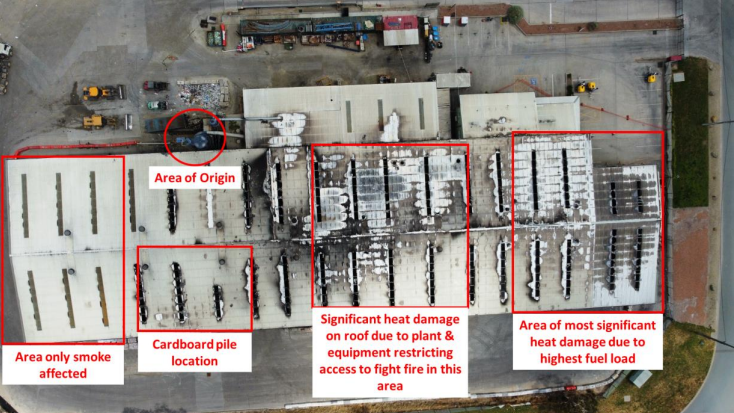
An aerial view of the damage caused by the blaze at the Hume recycling plant. Photo: ACTFR report.
The report noted the fire spread quickly from the external chute into the building where a large pile of cardboard was being stored, along with other co-mingled material.
As cardboard and plastics have a high heat release rate (HRR), and the smoke from the already burning materials raised the ambient heat of the materials in the building, they also quickly caught fire.
“When burning in a confined or partly confined compartment, such as in this case, the high HRR is contained in the smoke and through radiation assists in the preheating and spread of the fire … making it very difficult for attending fire crews to stop the fire spread throughout the facility,” the report stated.
As a result of this report, the ACT Government will ramp up its education efforts both in the Territory and across the border to make sure people know they shouldn’t be putting e-waste, such as batteries, in their general or recycling bins.
“This is a timely reminder to the community not to put batteries of any kind in your household recycling bin or landfill bin. We’re asking the community to please remember, ‘don’t bin your batteries’,” City Services Minister Chris Steel said.
“There are a number of free battery drop-off options in the ACT and NSW as part of the battery product stewardship scheme, B-cycle and at resource management centres.”
They can also be taken to the hazardous waste area at the Mitchell and Mugga Lane Resource Management Centres.

The fire damaged or destroyed about 80 per cent of the Hume recycling facility. Photo: ACTFR report.
Mr Steel said despite the damage to the centre, it’s been able to stockpile, sort and compact material, the majority of which is then trucked to centres in Sydney or Victoria to be recycled.
“The stockpile of recycling material following the fire has now been entirely cleared from Mugga Resource Management Centre, with 6550 tonnes recovered and only 60 tonnes of spoil being sent to landfill,” he said.
“Given the recycling plant was almost completely destroyed by the fire, this recovery rate is an excellent outcome. I want to thank staff for their work to ensure materials in Canberra’s yellow bins continue to be recycled.”
Mr Steel said work was continuing on the new plant, with more to be revealed in the coming weeks.
“Part of the discussions that we’re having at the moment is about whether we use the existing footprint or whether we build adjacent,” he said.
“It’s likely that a new facility will require new environmental approvals, and so we need to work through that, which of course, takes some time, so it’s likely a new facility won’t be up and running for a couple of years.”
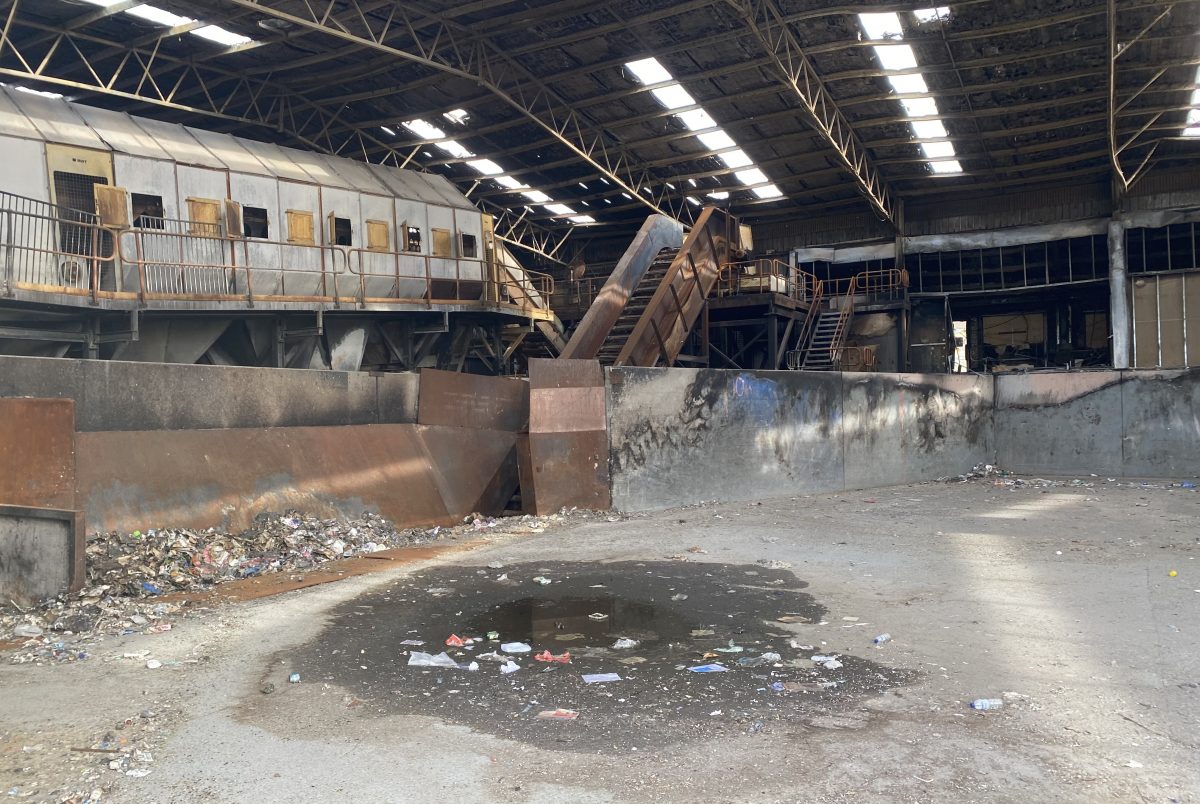
The interior of the Hume recycling facility was extensively damaged. Photo: Claire Fenwicke.
Lithium is found in many household batteries, such as non-rechargeable AA and AAA batteries, as well as in rechargeable batteries in devices like laptops, mobile phones, power tools and cameras.
Electric vehicle batteries also contain the chemical.
If a battery contains lithium, it will usually have a marking on them, such as ‘Li’ or ‘L-ion’.
“Damaged batteries, and battery-powered devices, are classified as ‘e-waste’ and should not be disposed of in general waste, bulk pick-up waste or waste heading to landfill, as this poses a significant [fire] risk,” Acting ACTFR Chief Officer Mason said.
“The last thing we want is for a disaster like this to happen again.”
You can learn how to safely dispose of batteries, and other hazardous household items, through the ACT Government’s Recyclopaedia.












